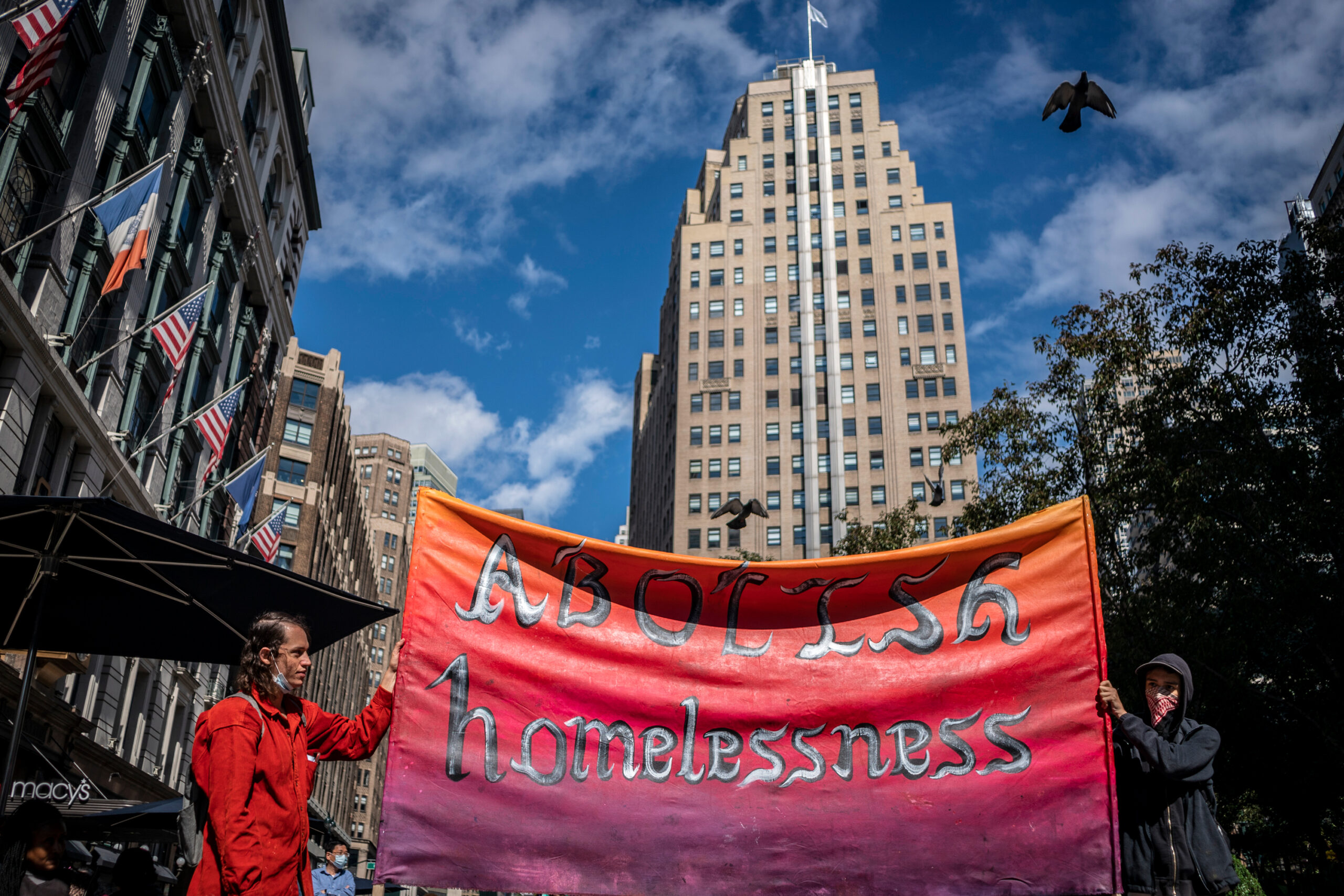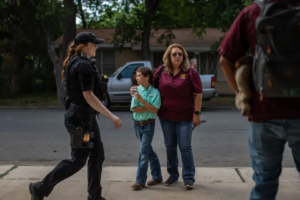This spring, the City Council celebrated new help for homeless New Yorkers: a generous boost in dollar value for city-issued rent vouchers so stingy many recipients can’t find apartments cheap enough to use the aid.
Now, formerly homeless people are looking at the fine print and learning to their dismay that the new, more generous CityFHEPS program could lock them out of their apartments and send them back to shelters.
The new vouchers will be pegged to the federal Section 8 program, which guarantees tenants pay no more than 30% of their incomes toward rent. The program currently allows rent of up to $2,053 for a two-bedroom apartment, with the government paying the difference.
But one CityFHEPS feature hasn’t changed: once enrolled, participants can earn no more than 250% of the federal poverty level, roughly the city’s $15 minimum wage for a full-time worker. And they must recertify their income every year.
This so-called income cliff forces voucher users who get offered a better-paying job or a raise to leave the program entirely, even if their rent is still unaffordable.
And to initially get into the program, someone can make no more than twice the poverty level, meaning a full-time minimum wage worker cannot qualify at all.
“You shouldn’t punish people for working,” said Catherine Trapani, executive director of Homeless Services United.
Trapani and other advocates for the homeless are looking to adjust the rules before the new voucher program goes into effect Sept. 1, to make sure people don’t get cut off or fail to qualify for housing help they need.
So is the bill’s sponsor, Councilmember Stephen Levin (D-Brooklyn) — who told THE CITY that he didn’t realize until too late that a line in his bill that removed the income limits wasn’t in the version that the General Welfare committee he chairs voted on.
“I take responsibility,” he said in an interview Friday.
“I feel a strong obligation to resolve the income eligibility issue before I leave the Council in December.”
Punishing Work
Levin wants the city Human Resources Administration to restore the gist of that line in its new rules for the program: No income limits, but the voucher would phase out entirely once the difference between 30% of income and the full amount of rent reaches zero.
Some versions of the bill stated exactly that — until a change two days before Levin’s committee unanimously passed the bill on May 26.
HRA is taking public comments on the proposed program rules, including continued income limits, through Aug. 30. Posted public comments already include complaints about the income cliff.
Spokespeople for City Hall and HRA did not respond to requests for comment.
The income cliff also plagues some federal programs, such as food stamps. Advocates for the homeless say it’s a mistake to perpetuate the problem.
“If you’re going to raise the minimum wage, then the eligibility thresholds for housing benefits should also increase because work should pay,” Trapani said.
“If you’re trying to get back on your feet and overcome homelessness, and you want to get a job as part of doing that, it shouldn’t be a negative if you choose to go that route,” she added.
Late Switch
HRA Commissioner Steven Banks launched CityFHEPS as part of a menu of new aid programs to help New Yorkers at risk of homelessness or already homeless find permanent housing. These replaced then-Mayor Mike Bloomberg’s ultimately canceled Advantage program, which reduced each tenant’s rent subsidies every year and phased out after five years, intended to encourage financial independence.
But with rents limited to scarcely $1,300 a month for some tenants, the new program led to widespread frustration, and many homeless people reported they were unable to use their vouchers.
Levin presented his Intro 146 in 2018. Yet pleas to increase the allowance went nowhere until housing instability brought on by the coronavirus pandemic injected new urgency.
When Levin held a September 2020 hearing in his committee, the bill merely pegged rent to the more generous federal Section 8 program. For instance, a person earning $15 an hour full-time would pay just $780 out of pocket for an apartment listed at $1,900, with the voucher covering the rest.
Amended versions in January and April 2021 additionally removed the existing income restrictions.
By May, de Blasio’s Human Resources Administration was on board with increasing the rent levels, according to Levin — but objected to lifting the income limits, saying the Council was likely overstepping its powers.
Two days before the bill went to a planned May 26 vote committee vote, a fourth version of the measure appeared, without any mention of income qualifications. That gave HRA the power to continue imposing its own income cap.
Advocates noticed the change in the city’s online bill tracker and immediately pressed Levin to restore the missing line lifting the income limits as well as a time limit on aid, to no avail.
“This is what happens when you cut out content experts at the end of the negotiation process,” Trapani said.
“People who had been working on rental subsidy issues for years, including people who have used rental subsidies, would have known and understood that when the administration proposed to simply default to the existing eligibility criteria, that it would have been a problem,” she said. “But apparently nobody in the room sort of understood what it meant when they reverted to that language.”
The City Council projects the increase will cost $900 million over the next five years, even counting an estimated $204 million in savings by helping people avoid homeless shelter stays.
Evicting a Son
Rhonda Jackson understands the impact of the income cliff all too well.
She is a housing advocate and fellow with the Family Homelessness Coalition who is formerly homeless herself — and says she lost her voucher last summer when her household’s income went over the limit.
The modest stipend she receives from the coalition, along with her income from her welfare, put her income at slightly above the 250% threshold, and she failed to recertify in July. Though she only paid about $330 out of pocket for her two-bedroom Williamsburg apartment through the voucher program, she is now on the hook for more than $1,100 a month on an affordable housing unit she secured in a lottery.
And that was after her adult son, who lived with her and had a job, moved out last year, she said — just so they could whittle down the household income to an acceptable level.
“So now he’s out in the street going into homelessness, he’s gone, and it’s just me and the apartment,” she said.
Jackson has joined the chorus of advocates who are pushing for the de Blasio administration to reconsider the income cliff.
“Give us a chance to at least breathe,” she said. “Because we lose everything once we start making a little bit of money: We lose medical, we lose food stamps, we lose the voucher and then we’re on phase to go back into shelter.”
This isn’t the first time the cliff has loomed large for formerly homeless New Yorkers. In 2018, when the minimum wage in New York City reached $15 an hour, many were denied recertification for their vouchers because suddenly they earned too much to qualify — prompting HRA to bump up the income limit to its present levels.
Karim Walker became homeless again after his recertification was denied then, and it took until March 2020 to get his voucher back. He won the city’s affordable housing lottery last summer, and moved into his East New York apartment in December.
‘We Have Nothing’
The Doe Fund, which provides housing and job training for homeless and formerly incarcerated men, has found HRA’s income limits lock many of their participants out of aid.
In 2017, 51% of the program’s clients qualified for the voucher program that preceded CityFHEPS, according to Elizabeth Lion, a Doe Fund spokesperson. But when the minimum wage increased to $15 in 2018, the share of clients who were eligible dropped to 21%.
Today, only 16% of the organization’s clients qualify for the subsidy. Those who do qualify spend an average 25 weeks searching for an apartment, compared to eight weeks in 2015, added Lion.
Finding an apartment ought to be easier with the new voucher levels, according to an analysis by StreetEasy. As of late last year there were just 564 apartments available under the program’s rent limits. The new law increases that to nearly 72,000.
Isabel McDevitt, executive vice president at the Doe Fund, said that the voucher eligibility requirements, not higher wages, are to blame for the income cliff risk. She said her organization supports the work of advocates at Homeless Services United to revamp the income limits.
Increasing the thresholds, she added, “benefits the city overall, because it will reduce the length of shelter stays and get people into permanent housing.”
Jackson is unsure of what she’ll do now. At nearly 61 years old and with a disability, she says she has a hard time finding work.
She still has her stipend from the Family Homelessness Coalition, plus income from her disability, public assistance and SNAP, but it’s not enough to cover her rent without the voucher.
“A lot of us that are coming out of shelter, we don’t have anything, we have nothing, which is why we were in shelter in the first place,” she said. “We need a soft transition.”
This article was originally posted on Boost to Skimpy Low-Income Housing Vouchers Leaves Formerly Homeless at Risk of Return to Shelters






Be First to Comment